Top 7 Winemaking Tips for the Spring Harvest
The Spring Harvest is underway! It’s time to get yourself set up for your Spring fermentations.
-
Plan out your batch
- What kind of wine do you want to make?
- Review your ferementation notes from previous seasons
- Taste wines from Chile and South Africa for inspiration
-
Review how to adjust your must
- Adjusting your Brix, TA, and pH
- Take an online class if need a referesher
-
If making wine from juice, decide on Fresco vs. Non Fresco Juices
-
Decide on the type of yeast you want to use
-
PRE ORDER
- Give us a call at 877-812-1137 or email us at sales@juicegrape.com
-
Think about the temperatures in your cellar
- Do you need extra heat?
- Do you need AC?
-
Keep an eye on the Harvest Tracker for updates on the Spring Harvest
Interested in making your own wine? Musto Wine Grape Company is here to help! Musto’s New England’s largest supplier for home winemaking products and services. Visit juicegrape.com or give us a call at (877) 812 – 1137 to learn more.
Product Spotlight: CSM Yeast
Product Spotlight: CSM Yeast
CSM yeast was derived from Bordeaux and helps create a vibrant aromatic profile. CSM aids in adding complexity to the palate and pairs well with malolactic fermentation.
Why you want to use it:
It’s the perfect yeast for the Chilean fruit. It reduces vegetal aromas, adds complexity, stabilizes color, and helps increase the aromatic profiles of berries and spices.
Use Tips:
Fermentation starts quickly with this yeast. Be prepared to see Brix drop 24 hours after inoculation. It can stand up 14% ABV and can handle temperatures from 59–90°F. However, I highly suggest keeping your fermentation temps lower than 75°F. Once you hit 80°F you lose aromas and “burn off” flavors. Keeping your wine between 59–75°F during fermentation is a best practice.
You also want to use nutrients when using CSM; nutrients such as Fermaid-O and Fermaid-K. CSM tends to produce H2S (rotten egg smell) if there aren’t enough nutrients during fermentation.
Avoid cold shocking the yeast at inoculation. You’ll want to get the must and the yeast starter within a few degrees of each other before pitching the yeast starter. But without temperatures falling lower than 55°F. Temps below 55°F could stall fermentation and/or kill the yeast.
Goes best with:
CSM was cultivated to help ferment Cabernet Sauvignon, Cabernet Franc, Grenache, Merlot, Sangiovese, Petit Verdot. However, we have seen it used on Carmenere, Malbec, and Syrah from Chile with great results.
Dosage:
6gm/gals
Flavor Profile:
Cherry pit, raspberry, blackberry, spice, violet, bark, and sweet pepper
Ready to make wine? Musto Wine Grape Company is here to help you make the wine of your dreams! The Spring South African & Chilean winemaking season starts soon! Secure your winemaking grapes or juices and give us a call at (877) 812-1137 to speak with one of our Musto Crush Crew members. We can get you set up with everything you need and provide customer support along the way to ensure your success!
How to Make Wine from South African Winemaking Juice
So how can you start making your own wine from South African juices? Follow these 10 Easy Steps (for fresh juice) and you’ll be on your way!
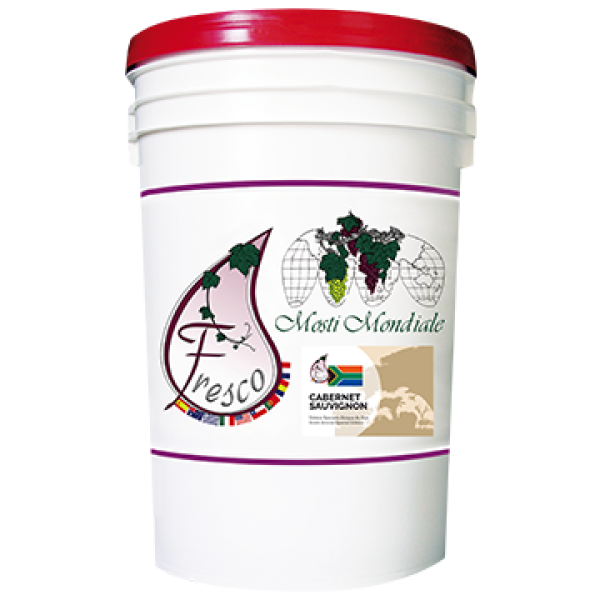
- Choose a South African variety that speaks to you.
- Come to Musto Wine Grape and pick up your pail of juice.
- Bring it home, pop open that lid, and add 1/4 tsp potassium metabisulfite to it. Add pectic enzyme if you’re going to (5 drops per gallon of juice). Give it a stir.
- Allow it to come up to room temperature – we’re talking 60 degrees or so.
- Choose your fermentation vessel: will you keep it in pails or ferment in a carboy or demijohn? Make sure everything is clean and sanitized. *Be sure there is enough room to account for fermentation foaming*
- If you are going to add fermentation tannins or additives (like oak dust, Booster Rouge, Booster Blanc) you can add that now. *Note: do not add tannins such as FT Rouge within 8 hours of adding enzyme*
- Pitch the yeast once the temperature has reached at least 60F. Yeast strain choices will vary depending on the juice you choose – ask a winemaker at Musto Wine Grape for a strain recommendation for the varietal you’re making. Follow the yeast starter directions explicitly. Be very careful of temperatures, never adding yeast if there is more than a 18 degree difference between the yeast starter liquid and the juice.
- Carefully monitor the fermentation by checking Brix levels daily. Add yeast nutrients as needed if you choose to do so.
- If you are adding malolactic cultures to your wine, you may also chose to do this at 1/3 Brix depletion. If using a malolactic nutrient (Opti-Malo Plus) with the bacterial culture, hydrate the nutrient in a separate container from the bacteria and add to the must directly before the addition of the bacteria. Follow all directions on the bacteria and nutrient packets explicitly.
- When the fermentation is complete, rack off the lees and continue aging. Many South African wines are aged with oak – if you choose to do this, you can do so in oak barrels or with oak alternatives (such as chips or staves).
Want to read more about making wine from Fresh Juice? Check out this blog post.
Can I make my own? Musto Wine Grape Company is here to help you make the wine of your dreams! The Spring South African winemaking season starts in late March, early April. Secure your winemaking grapes or juices and give us a call at (877) 812-1137 to speak with one of our Musto Crush Crew members. We can get you set up with everything you need and provide customer support along the way to ensure your success!
Spring Fresco juices
Fresco Juices
Ever bake a cake from a box and it came out delicious? Did you know you could do the same with winemaking?
Mondiale Fresco is proud to be the only product to offer home winemakers their own vineyard in one unique package. Each pail of juice is pre-balanced and adjusted to ensure you have the best winemaking success possible. Just warm up the juice to fermentation temperature and watch it go.
What does “pre-balanced” and “adjusted” mean?
Every season Mother Nature gives us a different wine grape harvest. Some years the acid, pH, and sugars are all in line with each other. Most times they aren’t and there needs to be some slight adjustments made pre-fermentation to ensure top wine quality. The Fresco juices are adjusted so that the acid, pH, and sugar levels are all in balance with each other. This makes for an easier fermentation and, a very pleasing wine.
Depending on the varietal of wine you choose, enzymes and tannins might be added – all pre-measured, and ready-to-go, just open the packet and add to the pail. These add-ons help with wine clarity and mouthfeel, contributing to the “taste like made from scratch”, or in this case, as if fermented on the skins. The Fresco juices are the best juices to work with for busy winemakers. You get the juice warmed up, watch it ferment, age, and bottle.
No muss, no fuss. Just delicious wine.
What varieties are available from Chile?

Cabernet Sauvignon:
This Chilean Cabernet Sauvignon offers a beautiful deep ruby colored robe with a predominant bouquet of blackberry and raspberry accompanied by a hint of pepper. Its slightly aggressive attack and long finish on the palate grant this wine the potential for a longer aging period.
Body: Full
Aroma: Fruity, Spicy
Origin: Chile
Winemaker addition: Light Oak
Alcohol: 13.2%
Carmenere:
This variety is considered as the flagship red wine of Chile. This crimson red wine has big character along with soft tannins and spicy undertones all at once. The mouth filling flavors are enhanced by the ever present oak.
Body: Full
Aroma: Fruity, Spicy
Origin: Chile
Winemaker addition: Dark Oak
Alcohol: 13.2%
Chardonnay:
Our golden straw-colored Chardonnay displays a tropical fruit bouquet complete with vanilla undertones. On the palate you’ll find notes of passion fruit and citrus – a well-balanced wine easily enjoyed during a meal or by a cozy warm fireplace.
Body: Full
Aroma: Fruity, Woody
Origin: Chile
Winemaker addition: Light Oak
Alcohol: 13.2%
Chardonnay Semillon
This wonderful blend brings together two halves of a whole into a harmonic union. The Semillon contributes flavors of honey and butterscotch to the Chardonnay’s nuances of tropical fruits and vanilla. A true symphony of flavors.
Body: Full
Aroma: Caramelized, Fruity, Woody
Origin: Chile
Winemaker addition: Dark Oak, Light Oak
Alcohol: 12.6%
Malbec:
Mosti Mondiale’s Chilean Malbec is an unforgettable journey through Chile’s wine country. A beautiful garnet robe, dark red cherry flavors and a nose comprising of cigar tobacco and coffee all combine for a delectable experience.
Body: Full
Aroma: Fruity, Herbaceous, Woody
Origin: Chile
Winemaker addition: Dark Oak
Alcohol: 12.9%
Merlot:
Our Chilean Merlot’s deep burgundy color, violet undertone and almost overwhelming bouquet of ripe red cherries and spices make it a true contender in the Chilean red wines category.
Body: Full
Aroma: Fruity, Spicy
Origin: Chile
Winemaker addition: Dark Oak
Alcohol: 12.9%
Sauvignon Blanc:
Light amber color with a strong citrusy bouquet and herbal undertones. Crisp and clean on the palate, can be enjoyed on its own or with light dishes or appetizers.
Body: Medium Full
Aroma: Fruity, Herbaceous
Origin: Chile
Winemaker addition: Light Oak
Alcohol: 12.4%
Viognier:
A medium-bodied white wine with aromas of freshly picked green apples and apricots that displays a stunningly long and floral aromatic finish. Take a sip of Chile!
Body: Medium Full
Aroma: Floral, Fruity
Origin: Chile
Winemaker addition: Dark Oak, Light Oak
Alcohol: 13%
What varieties are available from South Africa?

Cabernet Sauvignon
In the world of wines, the Cabernet Sauvignon is one that does not get neglected – and with good reason! The intense mouthfeel coupled with fruity notes of cassis, plums and cherries make this wine an unequivocal master of provoking the senses. Dry, full-bodied and slightly woody arising from the natural overabundance of tannins. If you are courageous enough to set this South African Cabernet Sauvignon aside for 12+ months, it will give new meaning to the phrase “ages like fine wine”!
Body: Full
Aroma: Fruity, Woody
Origin: South Africa
Alcohol: 13.2%
Pinotage
A South African line-up is not complete without a Pinotage. This bold red wine is synonymous with South Africa and it’s no wonder why – its hints of dark and red fruits combine to produce a medley consisting of blackberries, raspberries and licorice on the palate. More subtle flavors include rooibos, tea leaf and flavorful pipe tobacco. The bouquet exudes hints of wood and spices. Relatively high acidity provides a strong finish, making it the perfect pairing for game meats, gourmet burgers and homemade pizza.
Body: Full
Aroma: Fruity, Herbaceous, Spicy, Woody
Origin: South Africa
Alcohol: 13.5%
Sauvignon Blanc
You would be hard-pressed to find a more refreshing wine than a young, crispy South African Sauvignon Blanc. This splendid white wine is made to be enjoyed quite young. The combination of greenish, vegetal and mineral flavors emanating a few weeks after fermentation will make it very difficult to put this one away for a while. Off-dry with a lively acidity and medium finish. Serve slightly cool with light seafood platters.
Body: Medium
Aroma: Herbaceous, Woody
Origin: South Africa
Alcohol: 12.4%
Shiraz
Experience one of South Africa’s most renowned grapes: a dry, full-bodied cherry-red Shiraz with fruity, spicy notes when young. As it ages, subtler flavors like coffee, chocolate begin to take over. The nose slowly develops a hint of charcoal, which adds to the mysteriousness of this classic wine. Enjoy it with company if you really want to share it, but don’t be ashamed of keeping it your own little secret!
Body: Full
Aroma: Caramelized, Fruity, Spicy, Woody
Origin: South Africa
Alcohol: 13.2%
What varieties are available from Australia?

Cabernet Sauvignon
Full bodied deep garnet red. This wine offers up flavors of blackcurrant, blackberries with a slight hint of cedar. The tannin structure of the Cabernet Sauvignon matched with French Oak, create a wonderful symphony of tannins.
Body: Full
Aroma: Fruity, Woody
Alcohol: 13%
Chardonnay
This Australian Chardonnay offers up a complex fruity bouquet, with hints of ripe stone fruit and an underlying citrus note. On the palate it is well balanced with just the right amount of oak enhancing its full bodied flavor.
Body: Full
Aroma: Fruity, Woody
Winemaker addition: Light Oak
Alcohol: 13%
Merlot
Soft and mellow texture right from the start. This Merlot offers hints of cassis with light floral notes.
Body: Medium
Aroma: Floral, Fruity
Winemaker addition: Dark Oak
Alcohol: 12.5%
Orange Muscat
This white wine has citrus and honey notes with a slight sweet finish. On the palate it is fresh and crisp with a lingering clementine flavor.
Body: Light
Aroma: Caramelized, Fruity
Winemaker addition: Sweetener
Alcohol:12%
Petit Verdot
Bold and full bodied, the Australian Petit Verdot offers up flavors of dark fruits; black cherry, plums, with firm tannins and hints of spice.
Body: Full
Aroma: Fruity, Spicy
Winemaker addition: Dark Oak, Light Oak
Alcohol:13.5%
How do I make my own?
Musto Wine Grape Company is here to help you make the wine of your dreams! The Spring winemaking season starts in late April, early May. Secure your winemaking grapes or juices and give us a call at (877) 812-1137 to speak with one of our Musto Crush Crew members. We can get you set up with everything you need and provide customer support along the way to ensure your success!
2020 Winemaking Juice Update {071720}
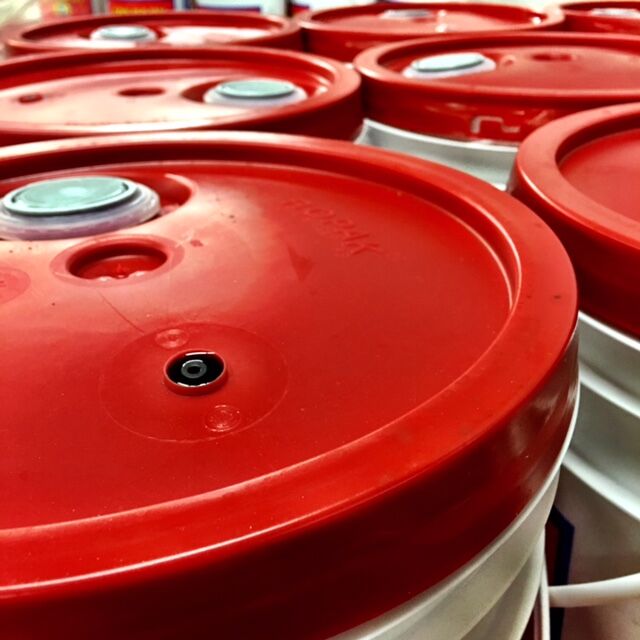
We anticipate that we will have Winemaking Juices the week after Labor Day! It’s time to plan this year’s vintage and we have a lot of juice options for winemaking this season!
California:
We have many labels of high quality winemaking juices coming in from California this fall. Cry Baby, Bella California, Lodi Gold, California Select, and Colina del Sol, just to name a few. The fresh juices are stored at 35 degrees and arrive as if the juice just came out of your wine press. You can either hit the juice with SO2 and inoculate with your chosen yeast, or you can let the juice warm up and ferment using the native yeast found in the skin of the crushed/pressed grape.
Lanza Vineyard Juices:
The Lanza winemaking juices arrive directly from Lanza-Musto Vineyards in Suisun Valley, CA. Varieties available are – Muscat Cannelli, Rose of Gamay (Pink), Chardonnay, and Sauvignon Blanc. They come in 5.25 gallon pails, are cold settled, with zero adjustments made to the juice. If you want Suisun Valley fruit but don’t have a crusher these are a great option.
Fresco Juices:
Mosti Mondiale Fresco is proud to be the only product to offer home winemakers their own vineyard in one unique package. Each pail is carefully pre-balanced, inoculated with the perfect yeast, and infused with liquid enzymes to help create a delicious and palate pleasing wine. The Fresco juices come from California, Australia, and Italy.
Italian Juices:
Our Italian juices will arrive in late October. The Italian juices are always full of flavor and provide palate pleasing, age worthy wines.






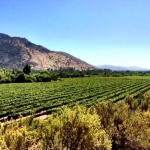
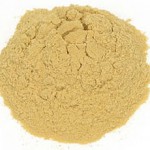
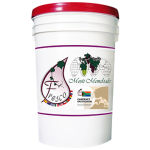
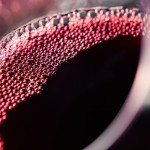

Recent Comments